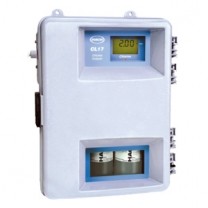CL17CL17D residual (total) chlorine analyzer
-
Category:Industrial automation instruments
- Click count:
- Release date:2024/07/09
- Online inquiry

-Working principle:
The CL17/CL17D residual chlorine detection/determination instrument uses the DPD (N, N-diethyl-1,4-phenylenediamine) colorimetric method to detect the concentration of chlorine. Due to the addition of buffer reagents, the sample is adjusted to a certain pH range, and DPD will react with residual chlorine or total chlorine in the water sample to generate purple red compounds. The residual chlorine detector uses spectrophotometry to measure its absorbance change and obtain the residual chlorine/total chlorine concentration in the water sample.
-Application industry:
The residual chlorine detector can simultaneously measure residual chlorine, pH value, and temperature. The Hash CL17 residual (total) chlorine detection/determination instrument is suitable for measuring residual (total) chlorine in chlorination disinfection processes such as drinking water, wastewater, and industrial circulating cooling water; The CL17D residual (total) chlorine detection/determination instrument is suitable for monitoring the concentration of residual (total) chlorine in drinking water pipeline networks.
-Instrument features:
● The residual chlorine detection/determination instrument adopts the DPD colorimetric method, which can detect residual chlorine or total chlorine.
● The residual chlorine detection/determination instrument utilizes built-in curve calibration for more accurate measurement.
● Equipped with automatic turbidity, chromaticity compensation, and automatic diagnosis functions to reduce measurement errors.
● A set of reagents can be used for automatic operation of residual chlorine testers for 30 days, and can be used for unmanned monitoring stations.
● The residual chlorine detector can be connected to an automatic chlorination pump to achieve automatic chlorination.
● The residual chlorine detector achieves automated operation and analysis, with an analysis cycle of about 2.5 minutes (conventional version)/10 minutes (pipeline version).
Previous article:Ultrasonic level gauge PWCS71
Next article:9184sc residual chlorine online detection/monitoring instrument

